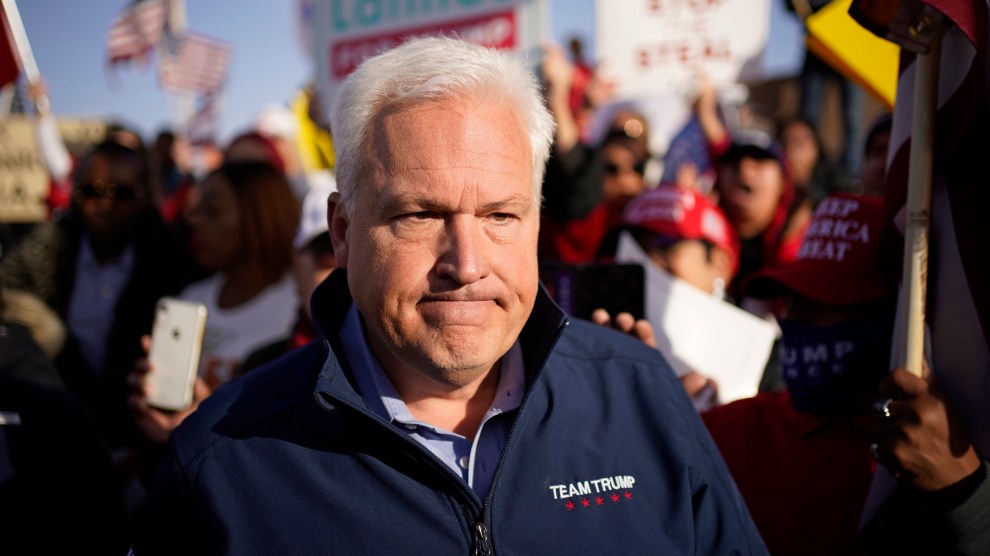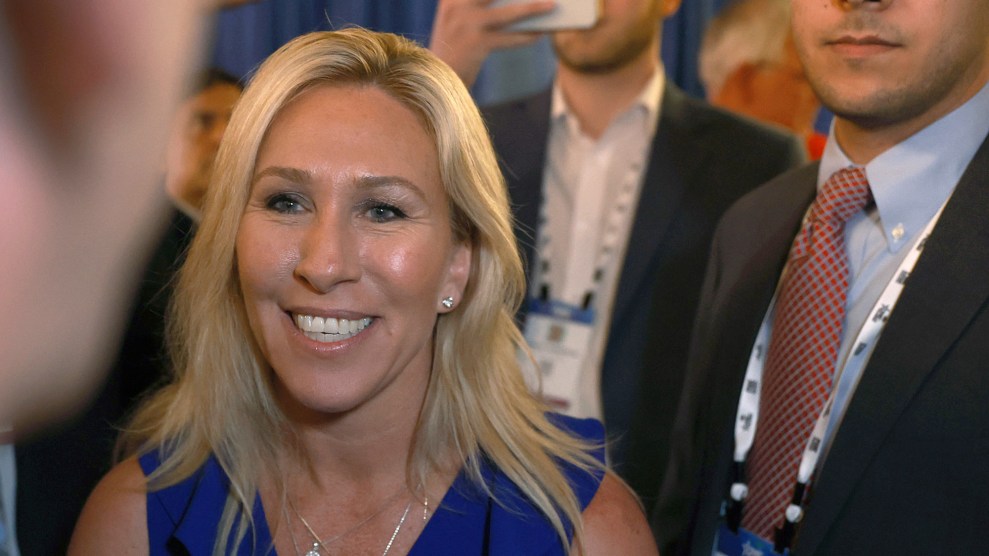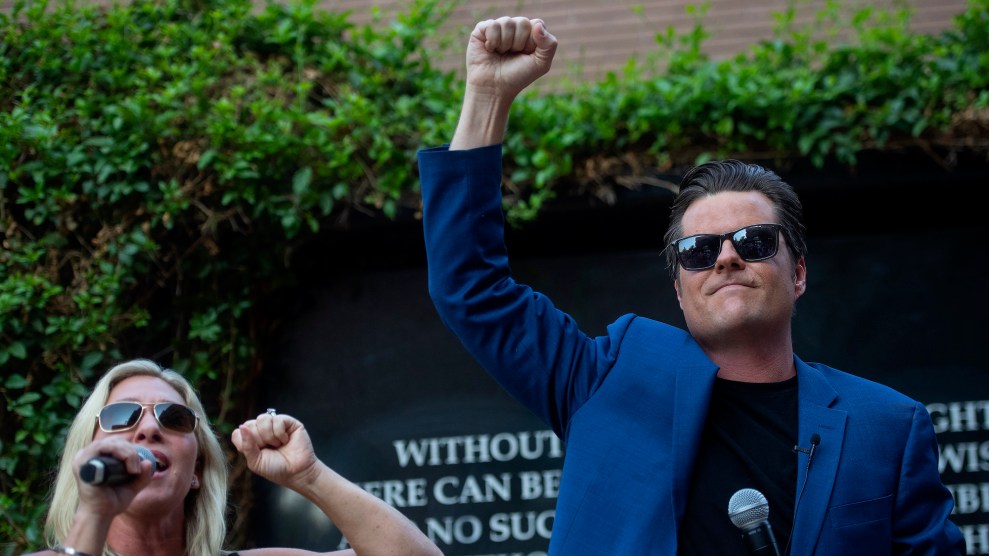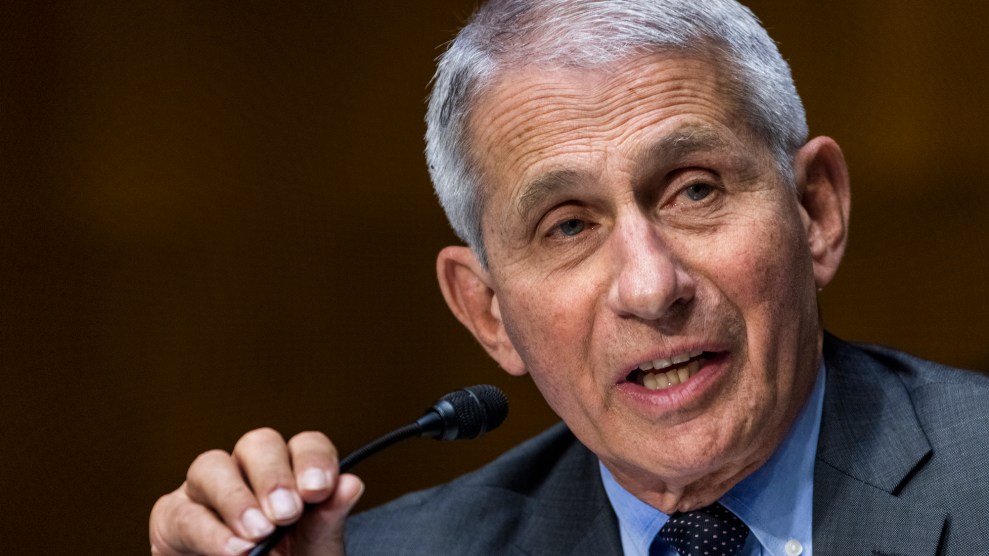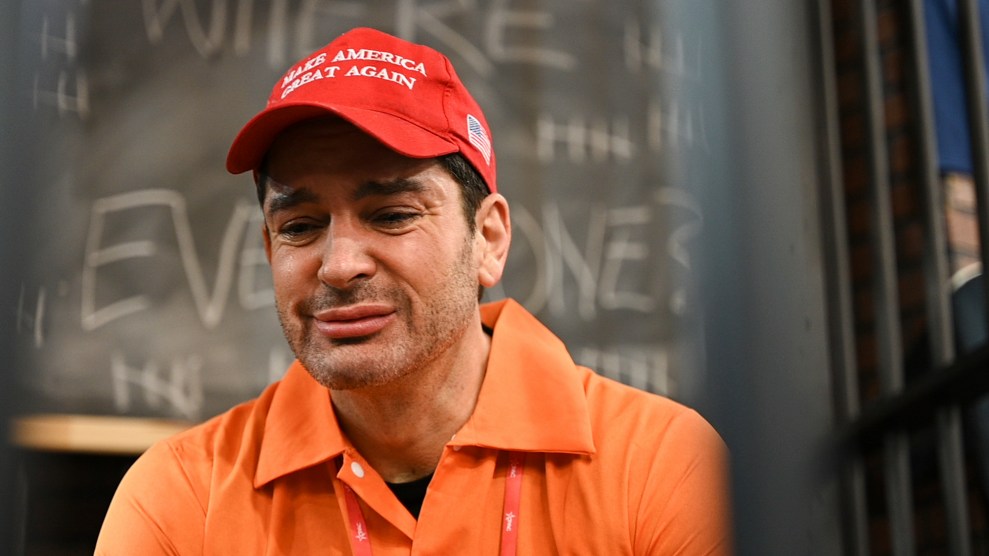
Think you've seen performance art? You haven't been to CPAC.Zach D Roberts/AP
On Friday, a real-life January 6 defendant cosplaying as a January 6 defendant sat sobbing in a fake jail cell at CPAC while wearing an orange jumpsuit and praying with Rep. Marjorie Taylor Greene (R-Ga.) The full story is even weirder.
As Tess Owen, who witnessed the immersive theater experience at the conservative convention held this week in Dallas, explains for Vice:
Attendees at CPAC, the massive annual conservative activist conference, were given bluetooth headphones, emblazoned with the word “silence,” where they were invited to listen to audio accounts from January 6 defendants who have been jailed due to the Capitol riot.
Some spectators wept. Some threw money into the cage. Others came up close to mutter words of comfort and support to the emotionally distraught man inside, who was alternating sitting on a bare cot with his head in his hands, and writing sad slogans on a blackboard like “Where is Everyone?” Among those in the audience was Zuny Duarte, mother of Enrique Tarrio, the jailed ex-chairman of the Proud Boys facing seditious conspiracy charges for his role in the Capitol. One man, wearing a T-shirt saying “Correctional Officers for Trump 2020” pointed at his chest, making sure the “jailed” activist saw, and said “”I know how it works, man.”
Then … Marjorie Taylor Greene showed up and got in the cage with him pic.twitter.com/0FWdFkNpht
— Tess Owen (@misstessowen) August 5, 2022
An actor played the January 6 defendant on Thursday. But on Friday, the role was filled by Brandon Straka, a Stop the Steal activist who recently pleaded guilty to one count of misdemeanor disorderly conduct for his role in trying to overturn the results of the 2020 election during the January 6 insurrection. As Owen reports:
The surreal scene around the cage in the CPAC exhibit hall was only made more bizarre when security guards began parting the crowds for extreme-right Republican Rep. Marjorie Taylor Greene. The “jail guards” unlocked the cage and allowed her in. She hugged Straka, before falling to her knees in front of the chair he was sitting on. They clasped hands and prayed together.
People recited the Lords Prayer. pic.twitter.com/qN3D8owlk5
— Tess Owen (@misstessowen) August 5, 2022
According to mistakenly unsealed court documents, Straka avoided jail time after providing “significant information” to the FBI. Straka has tried to claim that he was not a “snitch.” But the court documents, which show that he cooperated at each of his three meetings with the FBI, tell a different story.
On Friday, despite all his rage, Straka was still just a rat in a cage.


